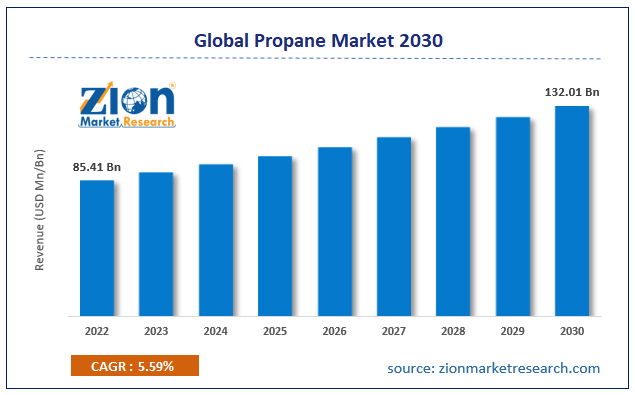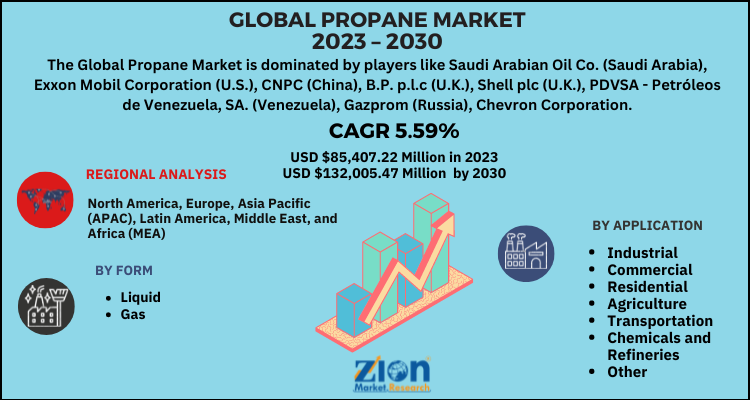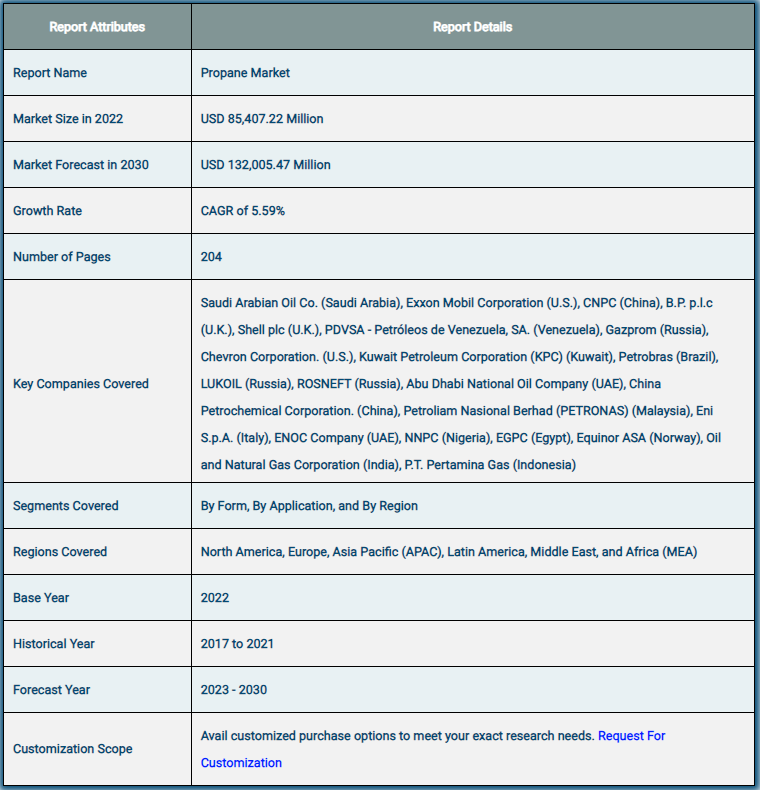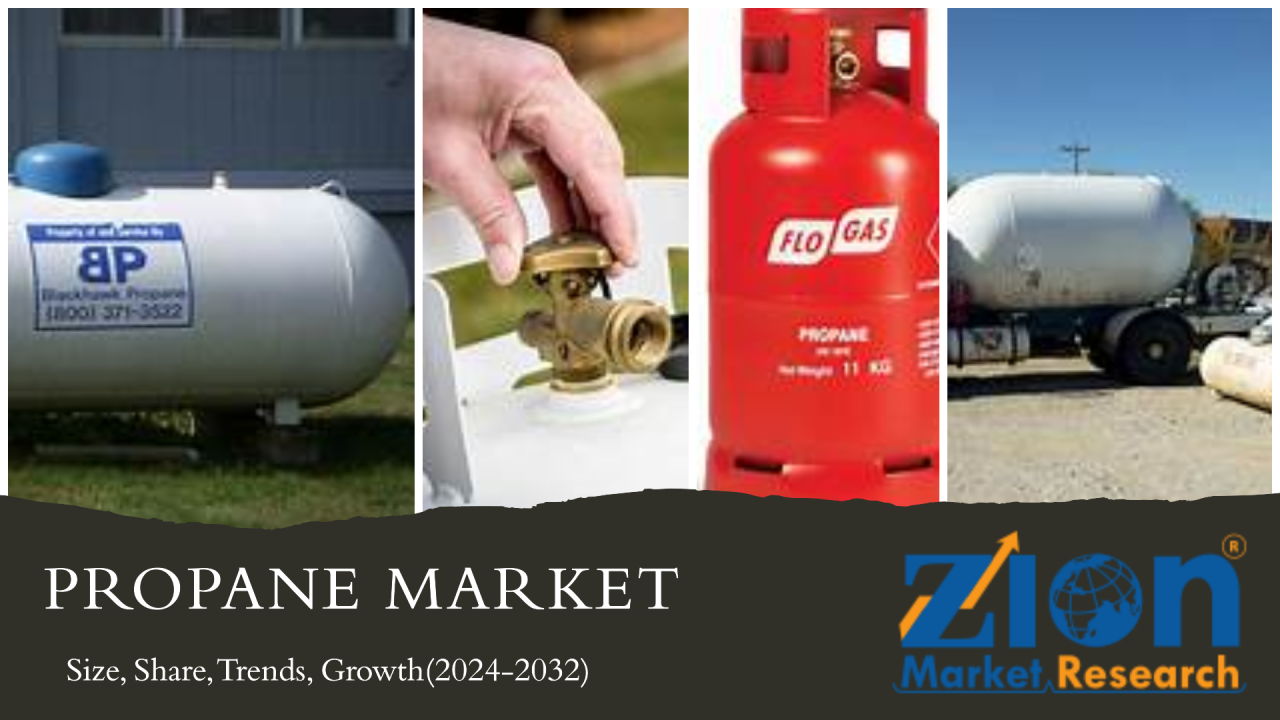The size of the global propane market was estimated to be about USD 85.41 billion in 2024, and it is expected to increase at a compound annual growth rate (CAGR) of roughly 5.59% between 2024 and 2032 to be around USD 132.01 billion.
Introduction
The global propane market is experiencing notable growth, driven by increasing demand for clean energy sources and the versatility of propane in various applications, including heating, transportation, and industrial processes. As a byproduct of natural gas processing and crude oil refining, propane is emerging as a key player in the transition to more sustainable energy solutions. This article explores the current trends, key drivers, challenges, and future outlook for the propane market.
Overview of the Global Propane Market
Propane is a three-carbon alkane that is widely used as a fuel for heating, cooking, and transportation. It is a clean-burning fuel, producing fewer emissions compared to other fossil fuels, making it an attractive alternative for both residential and commercial use. Key applications of propane include:
 Propane Market
Propane Market
- Residential Heating: Used in homes for space heating, water heating, and cooking.
- Industrial Uses: Utilized in manufacturing processes, as a feedstock for chemicals, and for heating in various industrial applications.
- Transportation: Propane is used as an alternative fuel in vehicles, known as propane autogas, particularly in fleet operations.
- Agricultural Applications: Used for crop drying, heating livestock facilities, and as a fuel for farm equipment.
In essence, propane is a gas that is mostly extracted from crude oil using fractional distillation as a stabilizing technique. The commercial, residential, industrial, transportation, refinery, and chemical industries are the main users of it. Propane burns cleanly and efficiently with no harmful pollutants, making it a green energy source. The primary source of fuel imports for a nation is propane.
Growth Drivers for the Global Propane Market
One of the main factors propelling the propane market is the rise in energy demand in the commercial end-user industries worldwide. Propane is utilized in the synthesis of ethylene and propylene as well as being employed as an energy source. The market for propane is expanding due to the rising use of propane in various end-user sectors and the rising need for fuels with improved efficiency. The usage of propane in residential, commercial, and agricultural settings is growing, necessitating the development of safety procedures. It is projected that the industrial sector will be the main consumer of propane.
 Propane Market
Propane Market
Segmentation of the Global Propane Market
The region and application categories are used to categorize the propane market. The segments of the worldwide propane market that deal with transportation, industrial, chemical & refinery, residential, commercial, and agricultural use are further separated based on application. Planned communities, housing societies, and multifamily housing make up the majority of the residential category. The commercial segment mostly consists of dining establishments, schools, and showrooms. Welding and space heating are included in the industrial division. Propane is becoming more and more effective in restaurants and schools. Furthermore, commercial facilities generate electricity through the usage of propane.
Market for Propane: Report Purpose
 Propane Market
Propane Market
Regional Analysis of the Global Propane Market
Latin America, North America, Europe, Asia Pacific, and the Middle East and Africa are the five regions that make up the worldwide propane market. North America is further separated into the United States, Canada, and Mexico. Moreover, China, Japan, India, and other countries make up the Asia Pacific region. The demand for propane in the Asia Pacific region is anticipated to be driven by the industrial, refinery, and chemical sectors. Better expansion in the automotive sector is envisaged in Western Europe now that the markets have recovered from the downturn. It is anticipated that in the near future, the power generating and transportation sectors will have a significant impact on the rising demand for propane worldwide in North America. The popularity and demand for propane mostly follow seasonal trends; in the summer, demand rises while prices are low and falls during the winter, when prices are high.
Market Drivers
- Rising Demand for Clean Energy The increasing emphasis on reducing greenhouse gas emissions and transitioning to cleaner energy sources is boosting the demand for propane. As a low-emission fuel, propane offers an effective solution for industries and consumers looking to decrease their carbon footprints.
- Government Initiatives and Incentives Many governments are promoting the use of propane through subsidies, tax incentives, and regulatory support for alternative fuels. These initiatives are encouraging the adoption of propane in various sectors, including transportation and residential heating.
- Growing Applications in the Industrial Sector The industrial sector’s demand for propane is rising due to its versatility and efficiency. Propane is increasingly used as a feedstock for producing chemicals, plastics, and fertilizers, driving market growth.
- Urbanization and Infrastructure Development Rapid urbanization and infrastructure development, particularly in emerging economies, are increasing the demand for reliable energy sources. Propane is being adopted in urban areas for heating and cooking, contributing to market expansion.
- Technological Advancements Innovations in propane production, storage, and distribution technologies are enhancing the efficiency and safety of propane usage. Improved infrastructure for propane supply and distribution is facilitating its adoption across various applications.
Market Trends
- Growth of Propane Autogas: The use of propane as an alternative fuel for vehicles, particularly in fleet operations, is gaining traction. With lower emissions and cost-effectiveness compared to gasoline and diesel, propane autogas is being promoted as a viable option for reducing transportation emissions.
- Increased Focus on Energy Efficiency: As industries strive to improve energy efficiency and reduce operational costs, propane is becoming an attractive option due to its high energy content and efficiency in combustion.
- Expansion in Developing Regions: The propane market is witnessing growth in developing regions, particularly in Asia-Pacific and Africa, where access to cleaner energy sources is becoming a priority. Increased investments in infrastructure and rising consumer awareness are driving demand.
Challenges
- Price Volatility The propane market is susceptible to price fluctuations due to its dependence on natural gas and crude oil prices. Price volatility can impact the profitability of propane producers and affect end-user adoption.
- Competition from Alternative Fuels The propane market faces competition from other alternative fuels, such as natural gas, biofuels, and electricity. As technologies evolve, these alternatives may pose challenges to propane’s market share.
- Environmental Concerns While propane is cleaner than many fossil fuels, it is still a hydrocarbon, and there are ongoing concerns about its extraction and potential environmental impacts. Addressing these concerns is crucial for maintaining public support.
Future Outlook
The propane market is projected to grow at a CAGR of X% from 2024 to 2030, driven by increasing demand for cleaner energy solutions, advancements in technology, and expanding applications across various sectors. Key growth opportunities are likely to arise from:
- Increased Adoption of Propane in Transportation: As governments enforce stricter emissions regulations, the adoption of propane autogas is expected to grow, especially in commercial fleets.
- Sustainability Initiatives in Industry: The industrial sector’s focus on sustainability will drive the adoption of propane as a cleaner alternative for heating and process fuel.
- Emerging Markets: Rapid urbanization and infrastructure development in emerging markets will create new opportunities for propane in residential heating and cooking applications.
Conclusion
The propane market is well-positioned for growth as the world increasingly seeks cleaner and more efficient energy solutions. With the support of government initiatives, technological advancements, and growing applications in various sectors, propane is poised to play a significant role in the energy transition. Addressing challenges related to price volatility and competition from alternative fuels will be crucial for stakeholders in the propane industry to capitalize on the opportunities ahead.
Contact Us:
Zion Market Research212
USA/Canada Toll Free: 1 (855) 465–4651
Newark: 1 (302) 444–016611\
Web: https://www.zionmarketresearch.com/
Blog: https://zmrblog.com/
